a town on four or more island
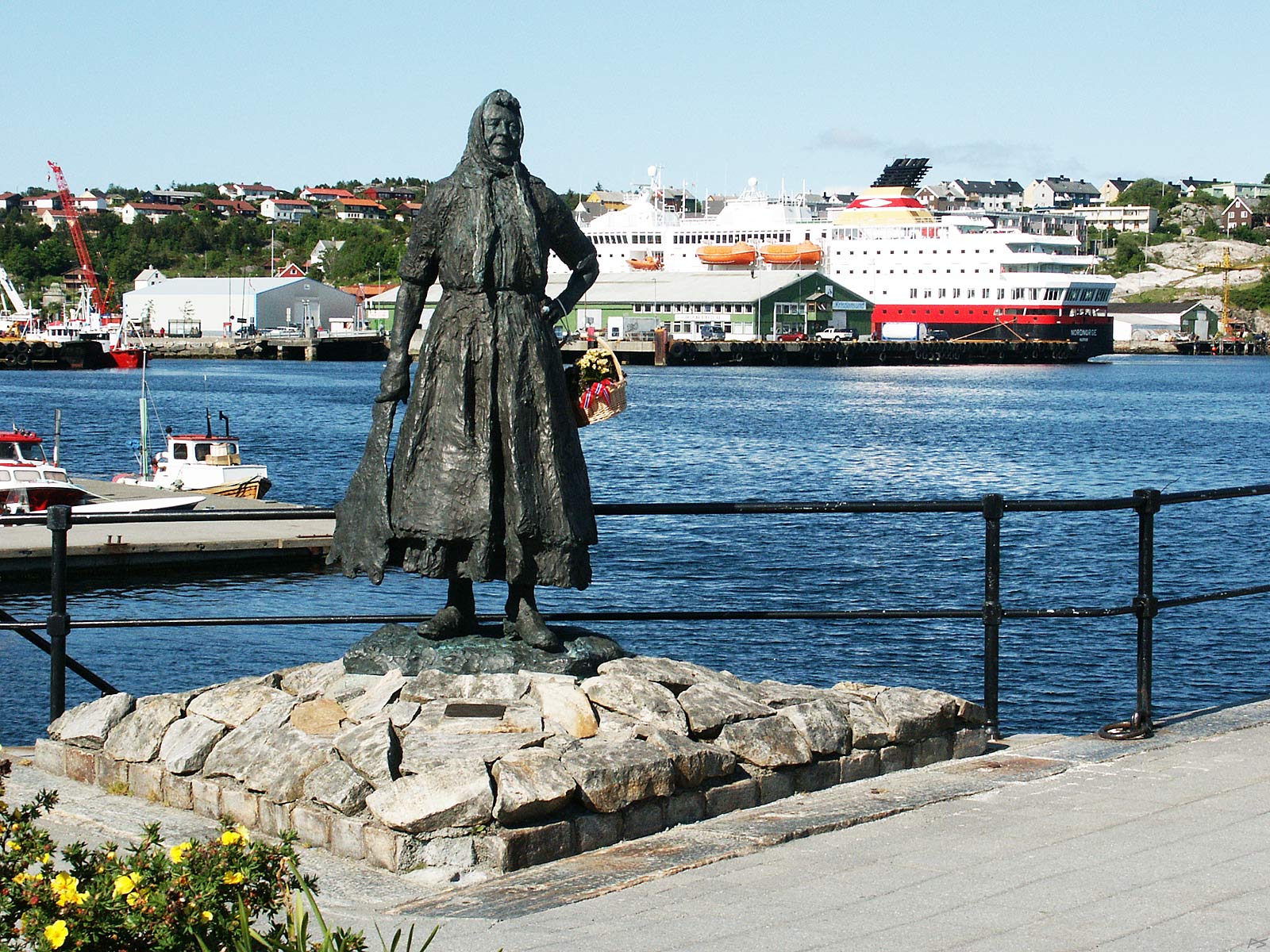
The Clipfish Woman of Kristiansund, sculptured by Tore Bjørn Skjølsvik (1992). Clipfish is usually salted cod originally sun-dried on the smooth rock of the Kristiansund shores. ('Clip' is an anglicisation of Danish-Norwegian 'klippe', obviously related to English 'cliff'.) The "clipfish women" – and the children – did most of the work on land, which included saving the fish from showers – the men did the fishing. The clipfish story starts in the 1690s and the product was, and still is, exported to Portugal and other, mainly Catholic, countries. This is the main reason Kristiansund prospered and grew. Now the fish is dried in drying houses elsewhere – not in Kristiansund. But they have a clipfish museum and every summer a clipfish festival. And in contrast to other towns, it's easy to find decent clipfish in the local shops. (I grew up near Kristiansund and I'm quite choosy regarding clipfish.)
(2003-06-16)

Sundbåt ('sound boat'). These boats started connecting the islands in 1876 and this is claimed to be the world's oldest continued public transport system. Although the islands are now connected by bridges and the number of boat passengers is lower than it once was, the boats are still operating. In the background the Nordlandet church built 1912–14. There are few old buildings in Kristiansund because during the German invasion in April 1940 a large fraction of the town was destroyed by fire bombs – while hunting for the fleeing King and Government.
(2008-05-10)
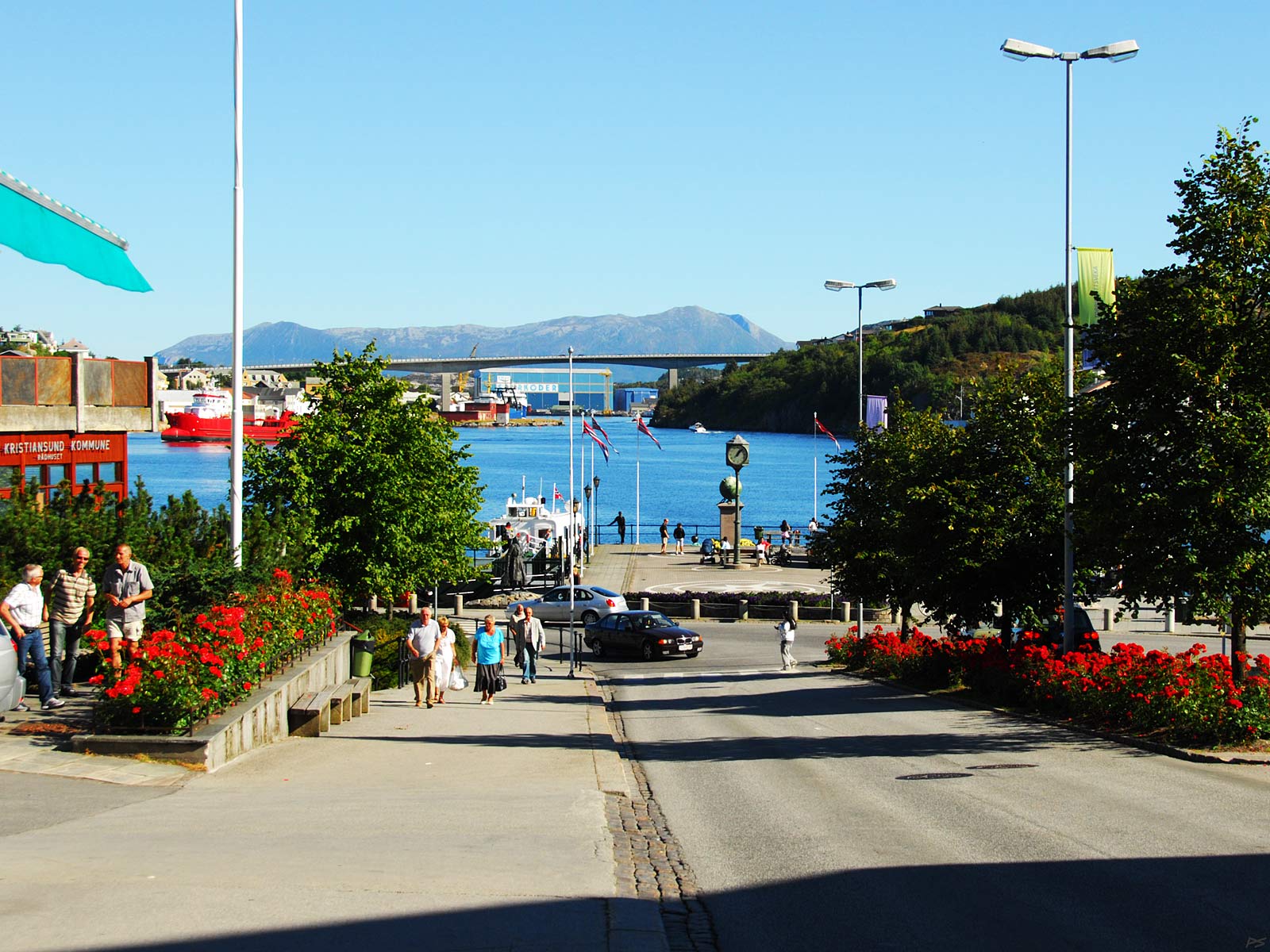
The lower end of Kaibakken, the street that runs down to the quay ("kai") and the main harbour, indeed the heart of Kristiansund. Behind the cars a 'sound boat' may be seen, and in front of it the keen-eyed ones may see the Clipfish Woman. Beyond the harbour the bridge Nordsundbrua.
(2010-09-08)

A closer look at the quay. The sound boat is seen to the left and in the harbour the Norwegian Coastal Express (Hurtigruten) is departing.
(2015-09-02)
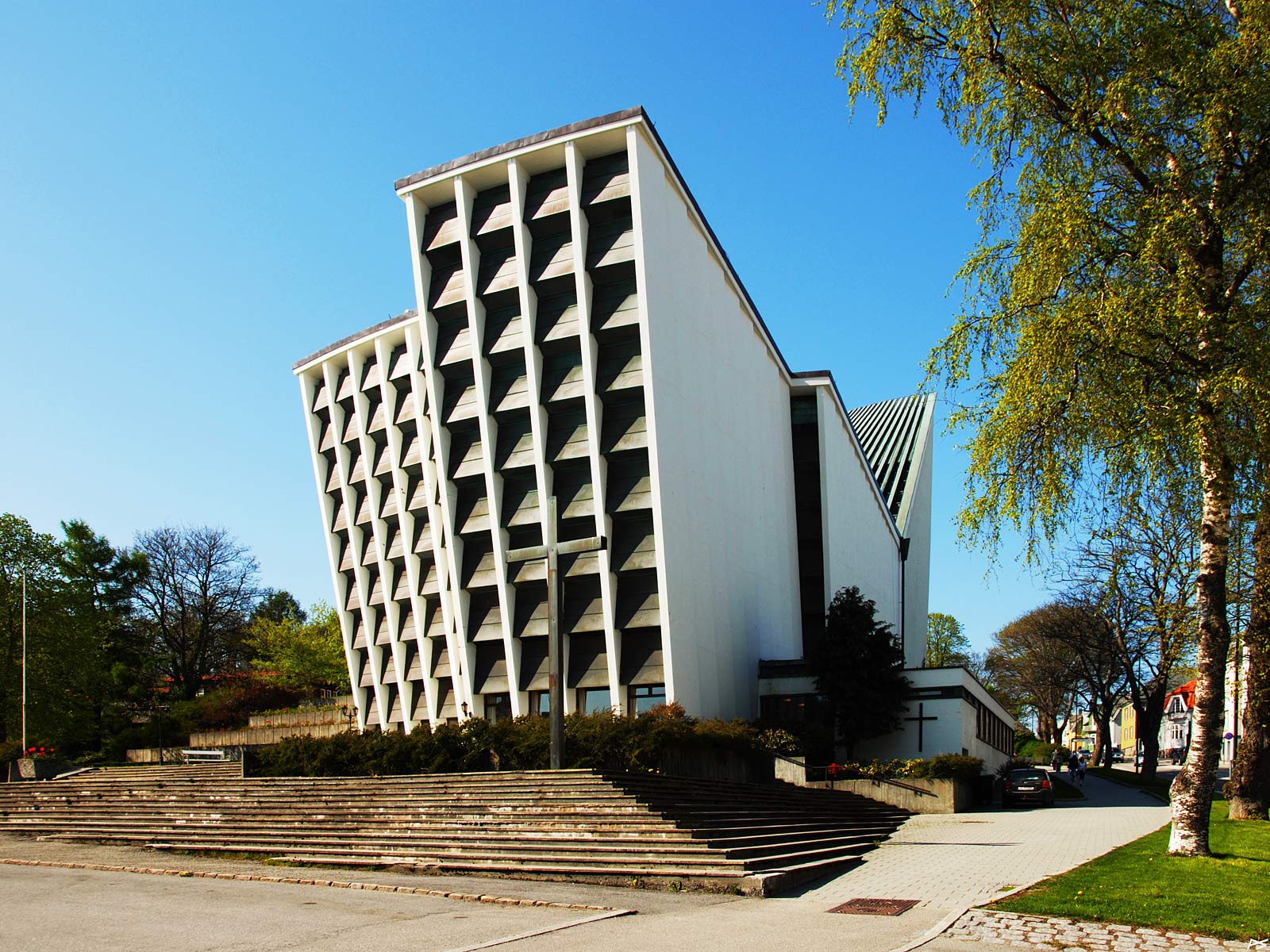
The Kirklandet church was built in 1964, the old church being destroyed by the Luftwaffe bombing in 1940. It is situated close to a main street, Langveien ("Long-road"). South of the church are several small parks and north of the church also the park and recreation area "Vanndamman" (below).
(2008-05-10)
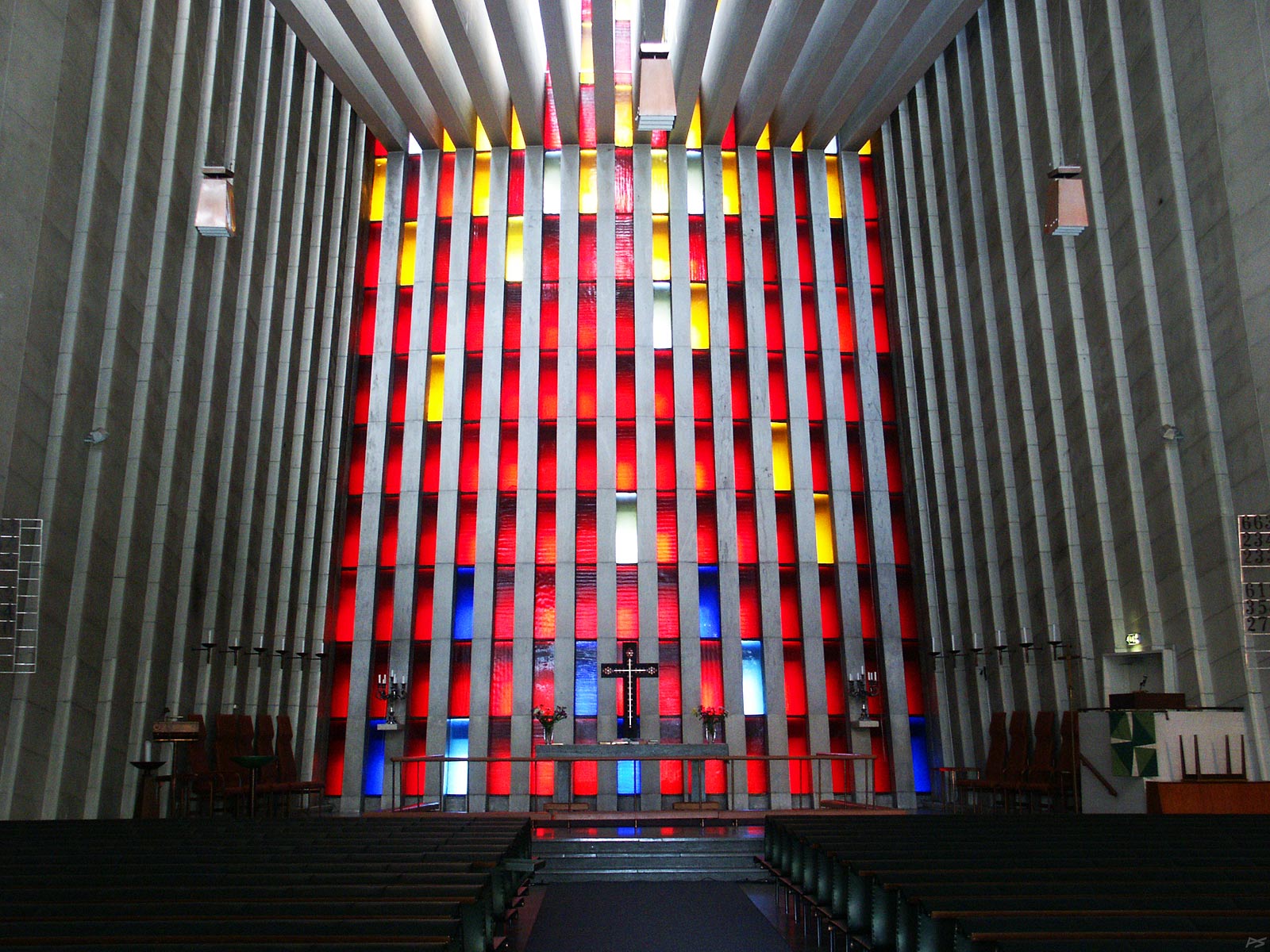
Inside the Kirklandet church. Daylight is entering through the coloured windows above the altar. Here the altar is in the north-northwest end of the church (up the road Langveien). The architect of this special church was Odd Østby.
(2003-06-16)
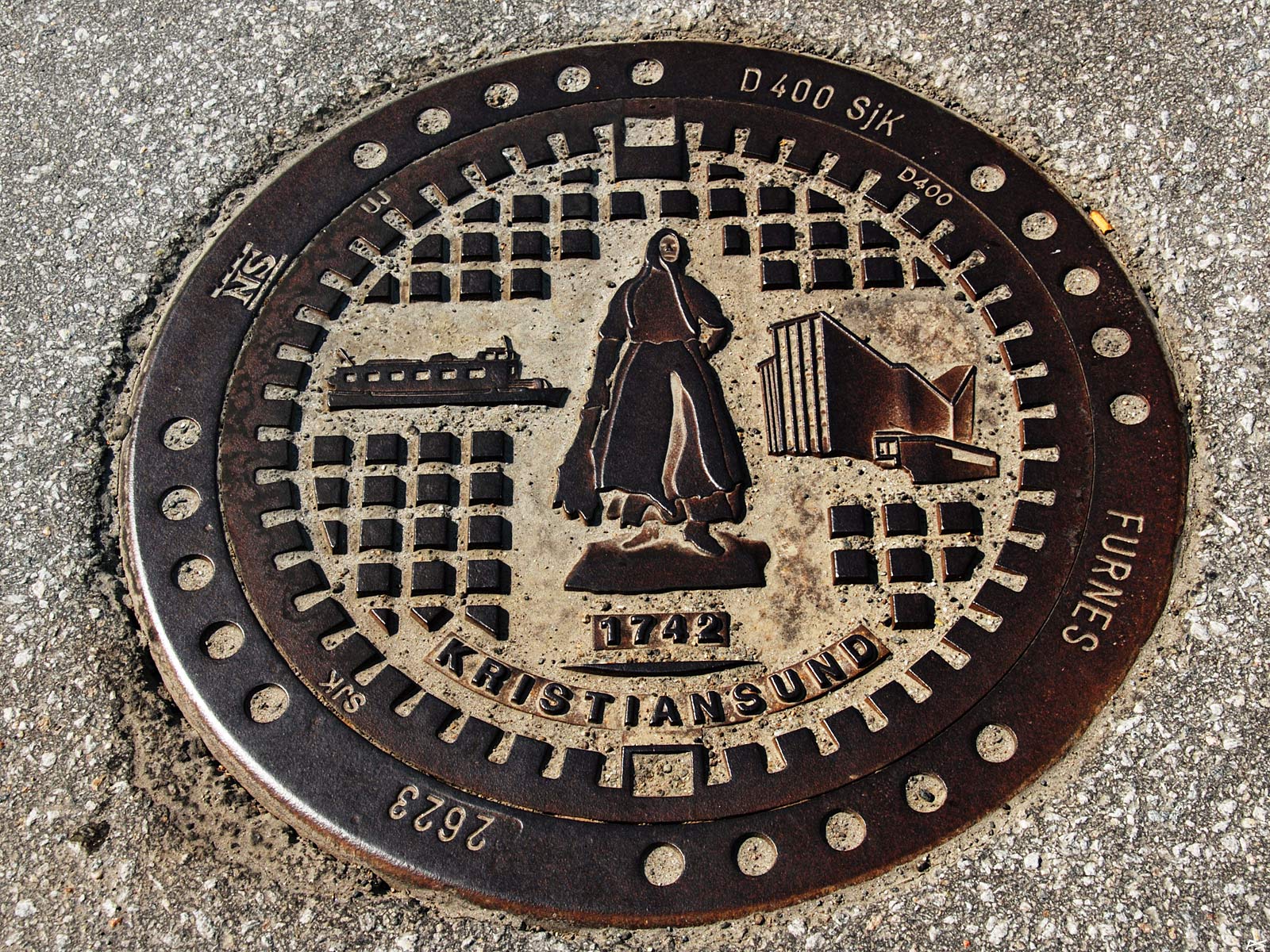
The manhole covers depict the clipfish woman, the 'sound boats', and the Kirklandet church. It also shows the year (1742) when King Christian VI permitted the place to become a town with the name Christiansund, later changed to the Norwegian spelling Kristiansund.
(2008-05-10)
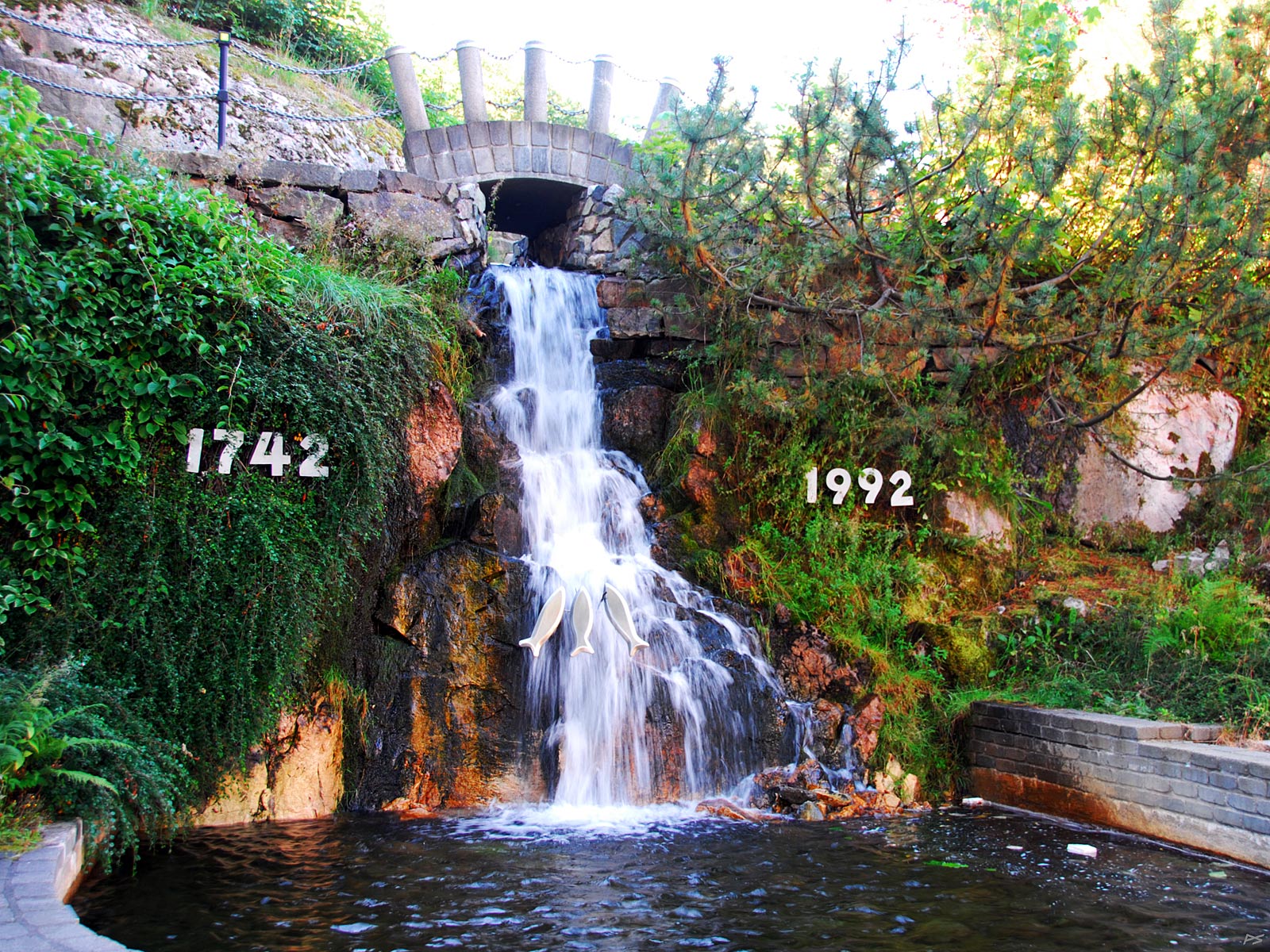
Before the place became a town the name was Fosen (also Fosna, Fossund). "Fosen" meant 'the hiding place', in this case '... from wind and waves', i.e. safe harbour. However, there is a similar Norwegian word, written "foss(en)" meaning (the) waterfall. In his letter of permit King Christian VI described the coat of arms for the new town (below). The King in Copenhagen obviously knew enough Norwegian to understand that "fos(s)en" meant 'the waterfall'(!), therefore the coat of arms looks like the one below: A waterfall with three salmons on their way up. Well, this is a small island and there has never been a proper waterfall here. But when the map doesn't fit the landscape one obvious solution is to change the landscape. The depicted arrangement was made for the town's 250th anniversary.
(2014-08-31)

The Kristiansund coat of arms
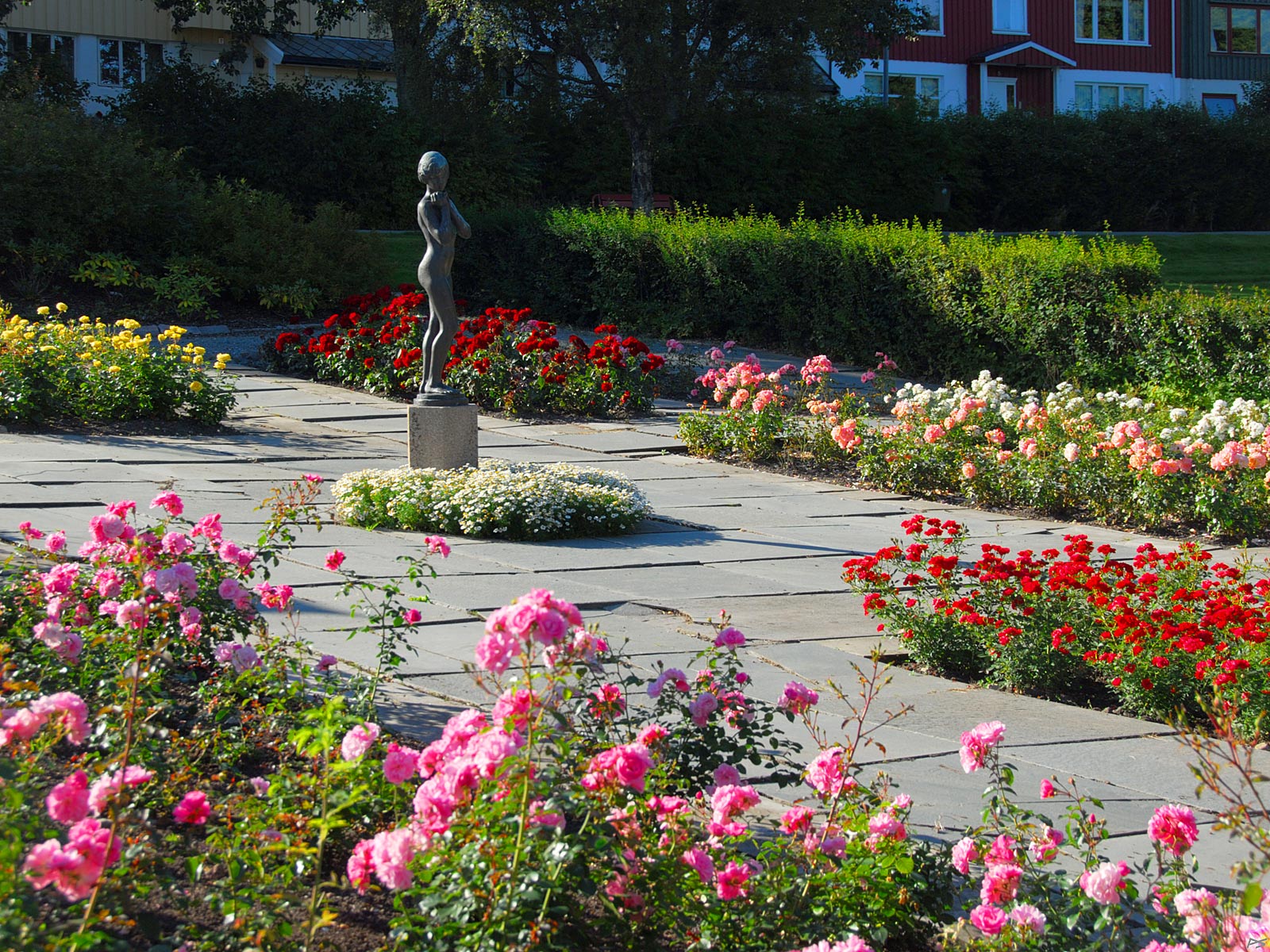
In the park (Nerparken) down the road (Langveien) from the Kirklandet Church stands the bronze sculpture "Young girl with a bird" by Arne Durban (1956). As for the roses, we sometimes get the impression that this town is trying to compete with the neighbour town Molde, "the town of roses".
(2014-08-31)
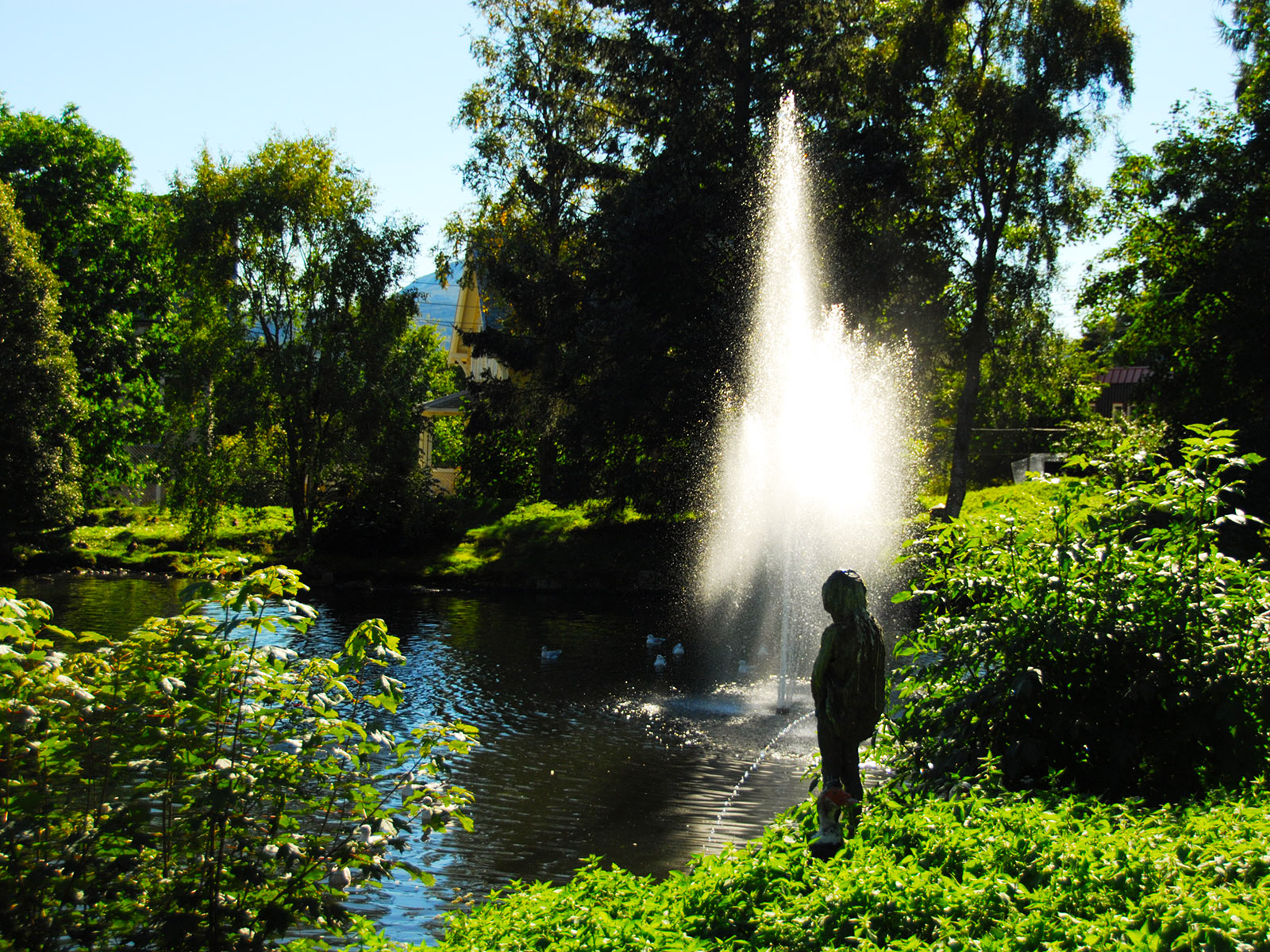
Sculpture above the Swan Pond, "Peeing Boy" (1972) by Tore Bjørn Skjølsvik. The Swan Pond, close to the town centre, was once a water reservoir.
(2010-09-08)

Leafing old birch at Vanndamman (the 'Water-Ponds'). In the 1800s the town needed more freshwater and in a long depression close to the town centre these water reservoirs were constructed, mainly in the years 1860–1912. In addition to the rather small Swan Pond there are three larger ponds in a row, and there was an intricate gutter system for collecting rainwater. By 1914 they had built a sub sea water pipeline from the larger island Frei and Vanndamman became a park and a recreation area. Since 1979 the town has got its tap water from the mainland.
(2008-05-10)

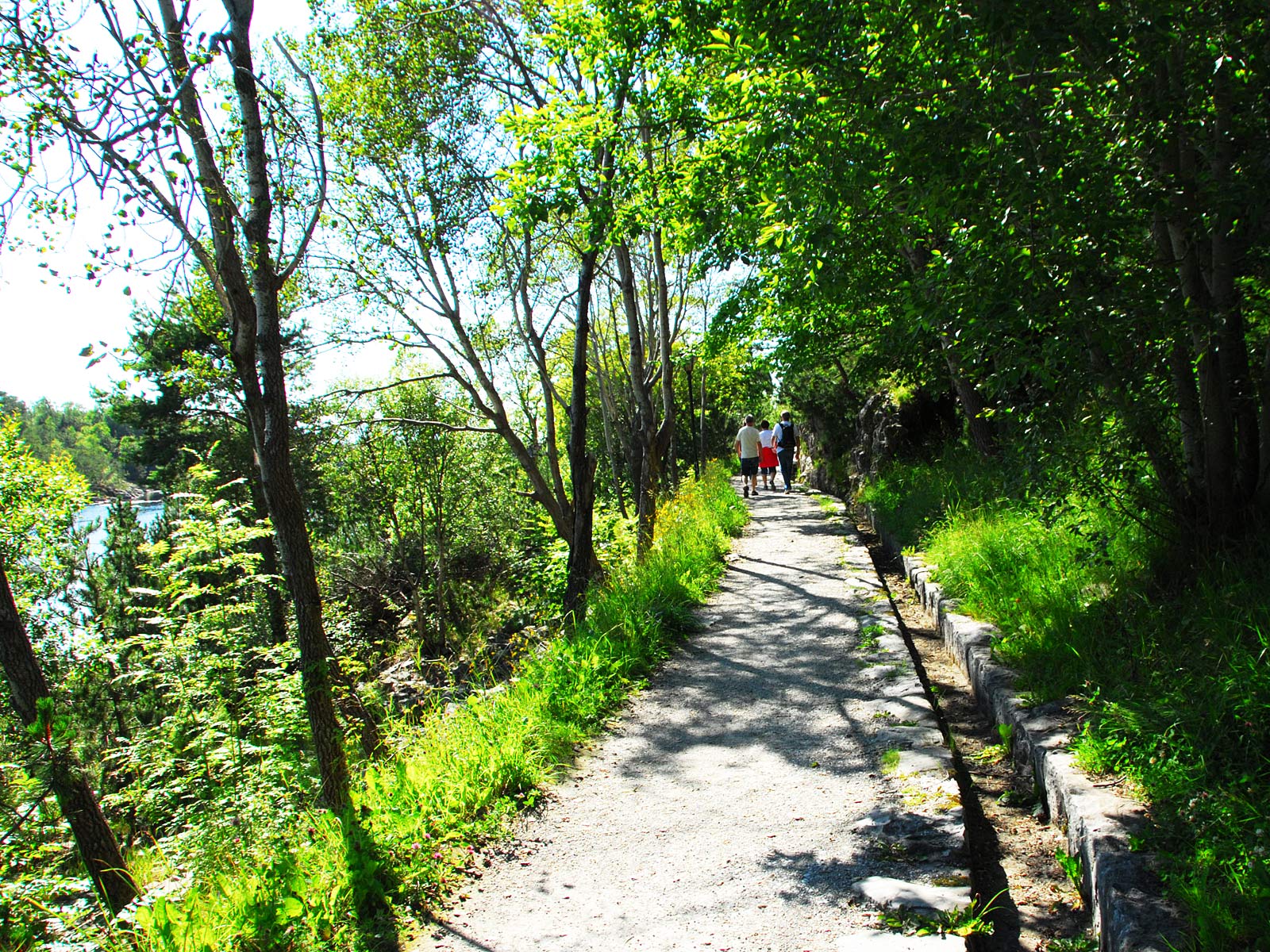
One of the ducts channeling the rainwater into the ponds. Here it is combined with a footpath.
(2011-07-16)
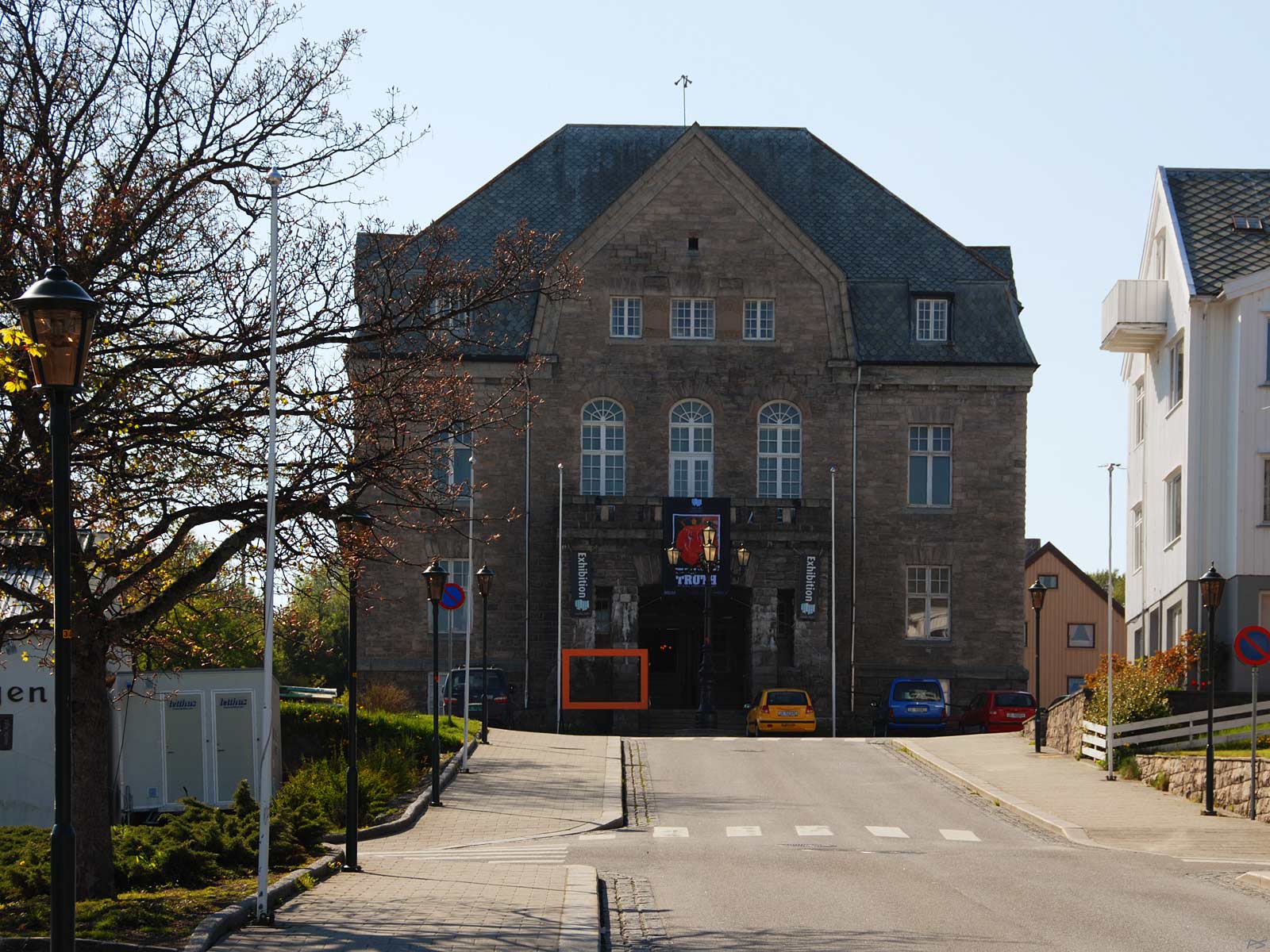
Festiviteten, the town's house of culture since 1914. There are art exhibitions, concerts, theatre, opera ... Since 1928 they have arranged an opera week, now every February.
(2008-05-10)

One of the Norwegian Coastal Express (Hurtigruten) ships departing Kristiansund under the Sørsundet bridge. It is sailing from Bergen to Kirkenes near the Russian border in 6–7 days. In any harbour in-between there is one departure northwards and southwards every day. This used to be the main transport facility along the coast, but now it serves to a large extent as a tourist cruise.
(2003-06-16)
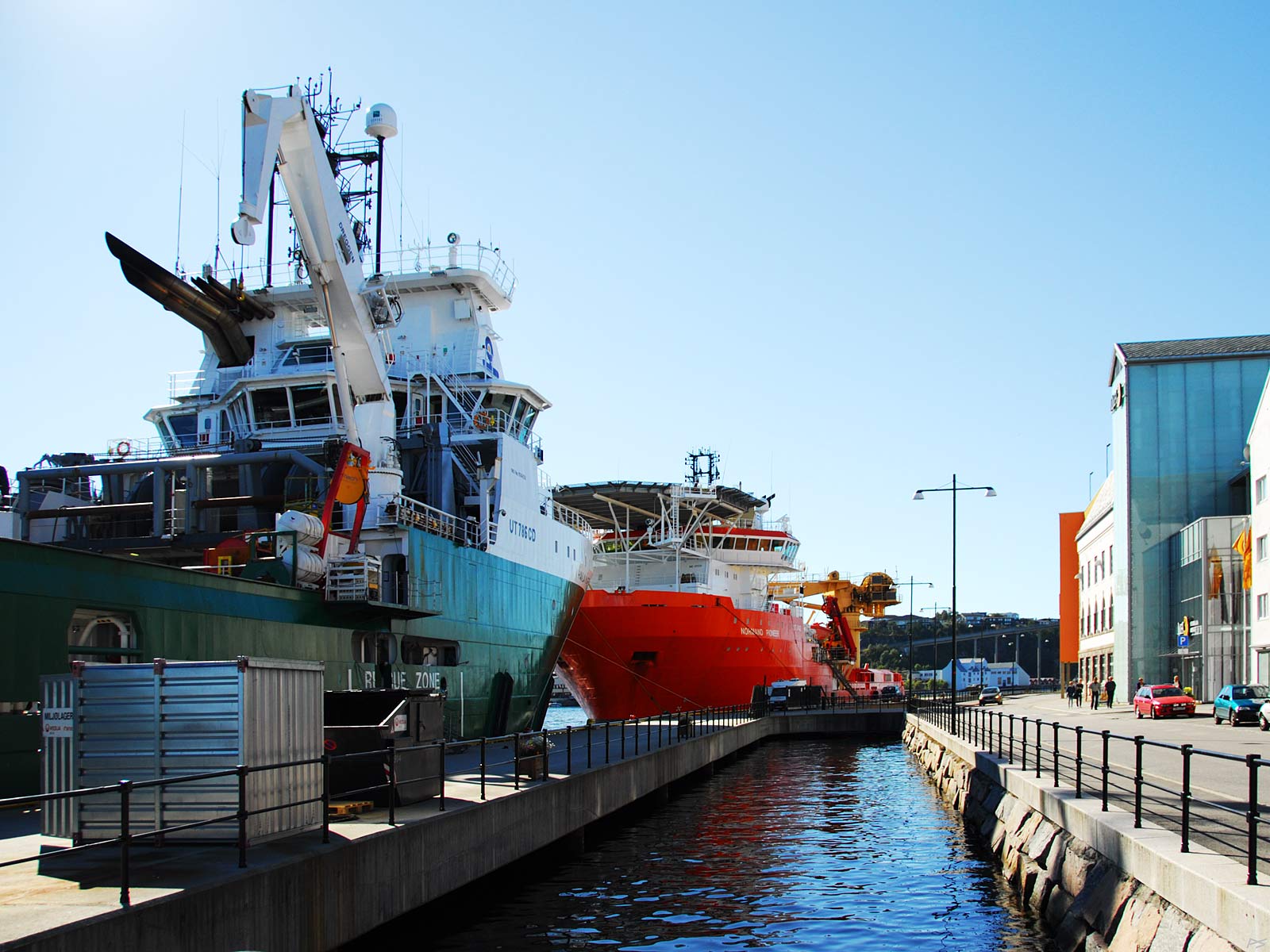
This is still a safe harbour. For fishing boats, transport vessels, and in later years supply ships for the offshore petroleum industry as shown here. Since the picture above was taken this quay has been rebuilt, because the side propellers of the supply ships had washed away the fundament of the old quay.
(2010-09-08)

Kristiansund is built on four or five major islands. There are bridges between the these island. From Frei to Bergsøya there is a 5.1 km subsea tunnel (Freifjordtunnelen) and from Begsøya to Gjemnes on the mainland a suspension bridge (Gjemnessundet Bridge) . From Bergsøya there is also a floating bridge (Bergsøysundet Bridge) to the island Aspøya and a shorter bridge from there to the mainland. There is also a subsea tunnel (Atlanterhavstunnelen) from Kirklandet in Kristiansund westwards to the island Averøya and roads further on to the mainland via "The Atlantic Road".
